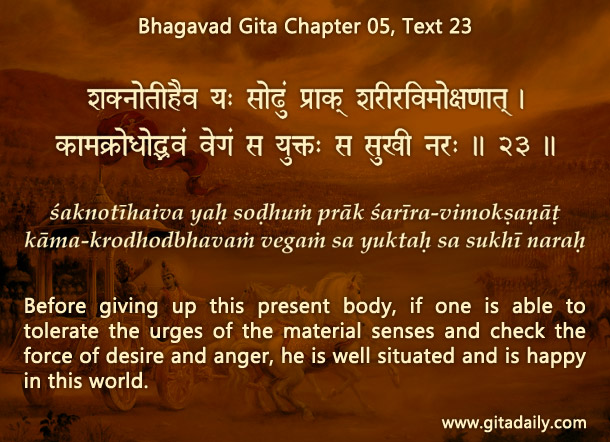We often feel strained by the pressure of having so many things to do. Even if we have a heavy workload, our strain frequently comes not from our outer burden but from our inner burden.
What is our inner burden? Our hankerings and frustrations.
We are bombarded by continuous media images that sometimes whisper and sometimes scream to us how we should be: what we should wear, what gadgets we should have and so forth. We hanker and struggle to obey the dictates of the media, but over time practical considerations force us to recognize grudgingly that we can’t acquire most of these media ideals. Our inability frustrates us. This combined weight of hankerings and frustrations is our inner burden; it strains us much more than the outer burden of our workload.
Among these two, decreasing the outer burden may not be in our hands, but decreasing the inner burden is. We just have to restrain ourselves by resolving internally to not be seduced by the media images. For this, the Bhagavad-gita (05.23) recommends that we tolerate the urges of hankering and frustration.
To tolerate, do we have to practice dry joyless abstinence, as when a diabetic person gives up sugar?
Not at all. The same Gita verse states that tolerance makes us happy (sukhi).
Gita wisdom helps us replace the outer happiness that we have renounced with a higher, inner happiness that we can attain by connecting devotionally with Krishna, who is the source of all happiness. When we cultivate his remembrance regularly and lovingly, our inner life becomes profoundly enriched. This enrichment propels us on the path to eternal happiness with Krishna. Additionally, as a byproduct it enables us to restrain ourselves. By this restraint, we tap hitherto dissipated mental energy and thereby manage life’s unavoidable strains better.


Leave A Comment